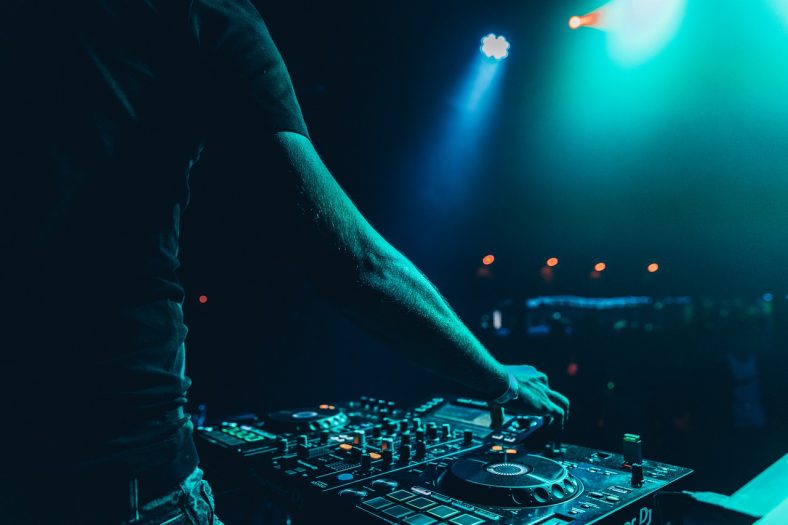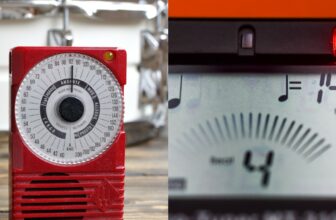House is a genre of electronic dance music that is characterized by a steady four-on-the-floor beat that usually lies somewhere between 120-130 beats per minute (bpm).
House tracks are often structured in standard song arrangements which consist of an intro, verses, a signature chorus, an interlude, and an outro. Although not all tracks adhere to this principle, we often hear works by House artists who chose to simply skip the verses by repeating a vocal sample from the chorus.
House is said to have originated in the clubs of Chicago in the 1980s. Over time, House evolved and branched out into a vast array of sub-genres. Let us take a look at some of the prominent ones
Contents
1. Acid House
In the 1980s, House traveled all the way to Europe from Chicago and the youth took to it immediately. The music, known for its use of the Roland Bass Line Synthesizer TB-303, along with the easy availability of drugs and access to nightclubs created a youth culture that became synonymous with Acid House.
Music historians often call this era “the Second Summer of Love”.
Along with the sound of the TB-303, Acid House consists of a steady four-on-the-floor kick drum in a 4/4 time signature and is generally somewhere between 120 to 130 bpm.
Some examples of classic tracks in this genre are Phuture’s “Acid Tracks”, DJ Pierre’s “Box Energy” and “Flow Coma” by 808 State.
2. Big Room House
Perhaps the most widely known of all the different kinds of House music, Big Room is synonymous with artists like Swedish House Mafia, Hardwell, Martin Garrix, Tiësto, Dimitri Vegas, and Like Mike.
It exploded in the North American music scene in 2009/2010 and festivals such as Tomorrowland, Electric Daisy Carnival, and Ultra Music Festival now program big-room house artists as their headliners owing to the popularity enjoyed by this genre.
There is usually a buildup and a drop in the songs and the tempo varies between 126 and 132 bpm.
3. Chicago House
Recorded in 1983, Jesse Saunders’ album ‘On And On’ is often credited as the first House record on vinyl. With its four-on-the-floor beat, layered keyboards, and simple yet dominant baselines, Chicago House is the original that paved the way for all the sub-genres as we hear them today.
4. Deep House
A lot slower than the others, Deep House typically lies in the realm of 110-125bpm with a strong jazz, soul, and funk influence. This also incorporates a lot of choppy vocals for danceability. Some of its pioneers are Marshall Jefferson, Mr. Fingers (Larry Heard), Kerri Chandler, Theo Parrish, and Fred Everything.
5. French House
Using disco samples from the 1970s and 80s, heavily filtered vocals which resulted in a vocoder effect and funk baselines, French House became prominent thanks to artists like Daft Punk, Bob Sinclair, and Cassius.
6. Bass House & Electro House
Bass and Electro House incorporate massive sawtooth wave bass sounds and the tempo usually varies between 125-135bpm. Although this sound started to brew sometime in the 90s, it was in the early and mid-00s that this genre emerged as a much heavier alternative.
Artists such as Zedd, Erol Alkan, and Bloody Beetroots are credited for inspiring this genre which has since enjoyed mainstream popularity through the works of Deadmau5. Daft Punk’s album ‘Discovery’ is perhaps one of the best examples of the influences of this genre, which was then further innovated by acts like Justice and Digitalism.
7. Future House
Coined by French DJ Tchami, according to him, Future House represents “any kind of House music which has not been yet.” The tempo will usually be within 120-130bpm with lush organ-style synths.
8. Latin House
Latin music like Samba, Bossa Nova, Tango, Mambo and Reggeaton have deeply diverse rhythm patterns and they use a variety of percussive elements in unconventional time signatures. Latin House combines these elements with House music and this makes for a distinctive new sound.
Labels like Nervous Records and later, Cutting Records in the mid-90s brought Latin House to the forefront, the influences of which can be found in the works of popular artists like Diplo.
9. Minimal House
Elements of deep house and minimal techno form Minimal or Microhouse. In the late 90s and early 2000s, the steadiness of techno was incorporated with House kick drum and hi-hats patterns. Synths are layered for texture, to not overpower the song and the tempo remains between 115-130bpm.
10. Progressive House
Progressive House emerged in Britain and incorporates rhythmic layers which are added and subtracted throughout the song to build intensity. Thus there are peaks and troughs throughout the track and they are not as hard sounding as Deep House. Some tracks feature extended build-ups that last as long as 4 minutes, as seen in the song ‘Strobe’ by Deadmau5.
11. Tech House
Tech House often blurs the line between House and Techno. There is a short but prominent kick drum and percussive elements such as hi-hats and snares are often distorted or heavily filtered. The synth lines are repetitive and use square or sawtooth waves to make them sound “techno”.
12. Tropical House
Derived from music such as Dancehall, Tropical House is relaxed and uplifting. It has a laid-back vibe and is often reminiscent of a vacation by the beach. From the mid-2010s, Tropical House has steadily found its way into mainstream pop through breakout hits like Justin Beiber’s song ‘What Do You Mean’ produced by MdL.
History of House Music
House is said to have originated in the clubs of Chicago in the 1980s, before gaining attention and popularity worldwide. Its initial enthusiasts were primarily gay, black, and Latino listeners who were takers of the unique fusion of 1970s disco and soul vocals with the futuristic Eurodisco which heavily used synthesizers.
The now iconic deejay-producers Frankie Knuckles and Marshall Jefferson are generally credited for inventing house music.
Although there is no clear written history for its nomenclature, popular belief is that during the explosion of club culture in the 1970s, Chicago’s famous club, “The Warehouse” had a cult following for providing its patrons with a safe space. Records of the music played at the venue became available to the public at record stores. These were labeled “as played at The Warehouse”. This, thus, became known colloquially as “house music”.
Summary
Using the term “House” by itself to describe music is now too generic a term as the music industry has expanded to include a vast array of house sub-genres.
While these are only some of the popular sub-genres of House Music, they are not the only ones. Like most other forms of music, House, too, has a rich history. It has been constantly evolving to fit the needs of the listener. What is important is that House is and always has been about inclusivity and providing a space for those who feel like they do not belong.
After all, there are few things as powerful as music, and dancing to music can often feel like a communion with a power higher than oneself. So put on a playlist of your favorite genre and take some time out today to dance, even if it is just by yourself!






